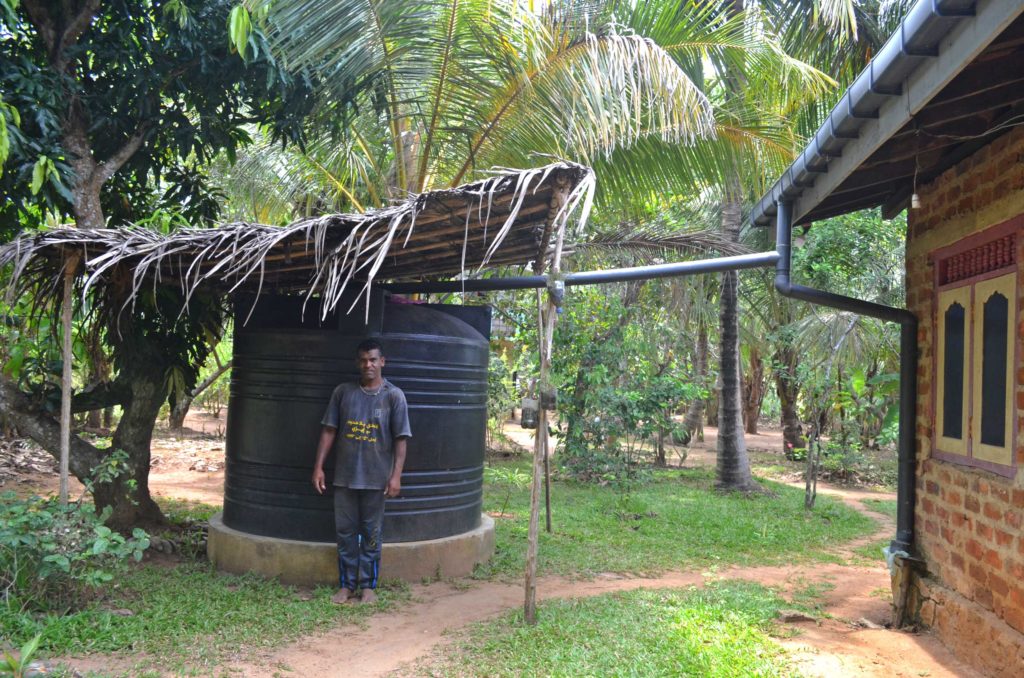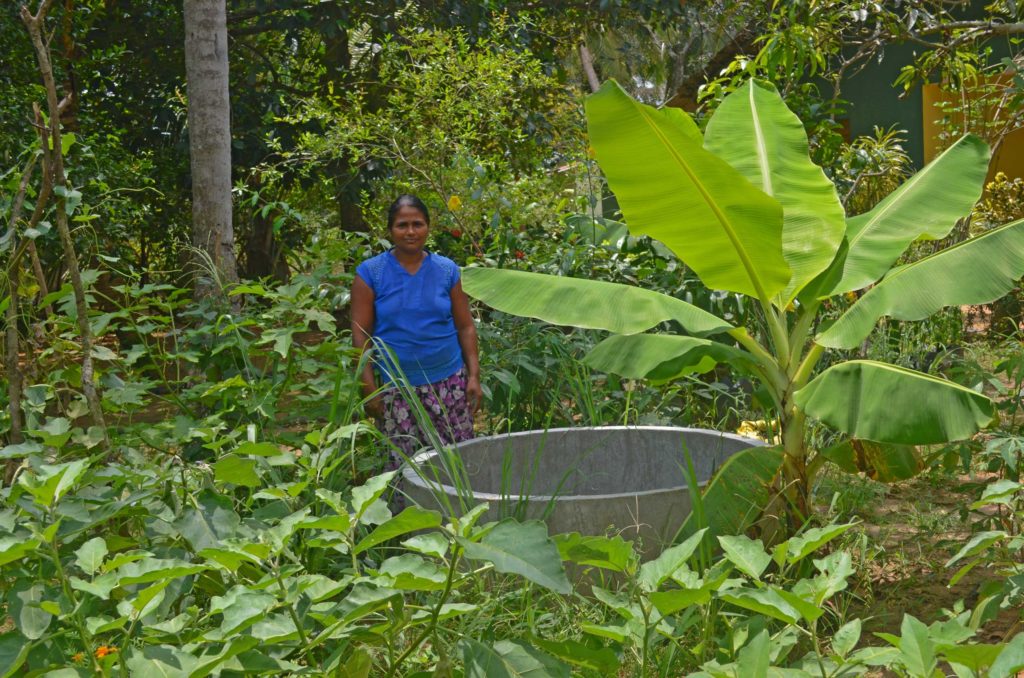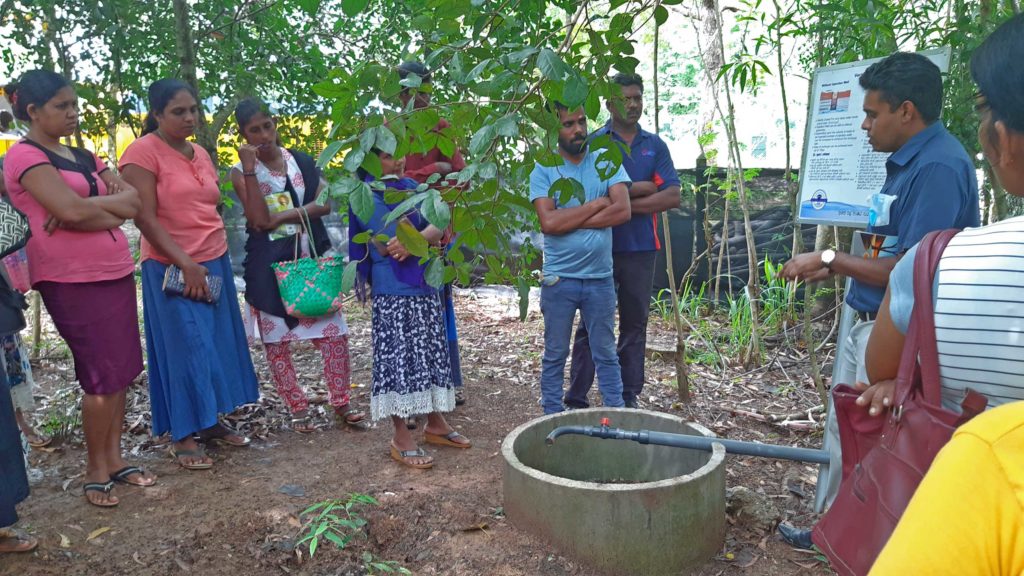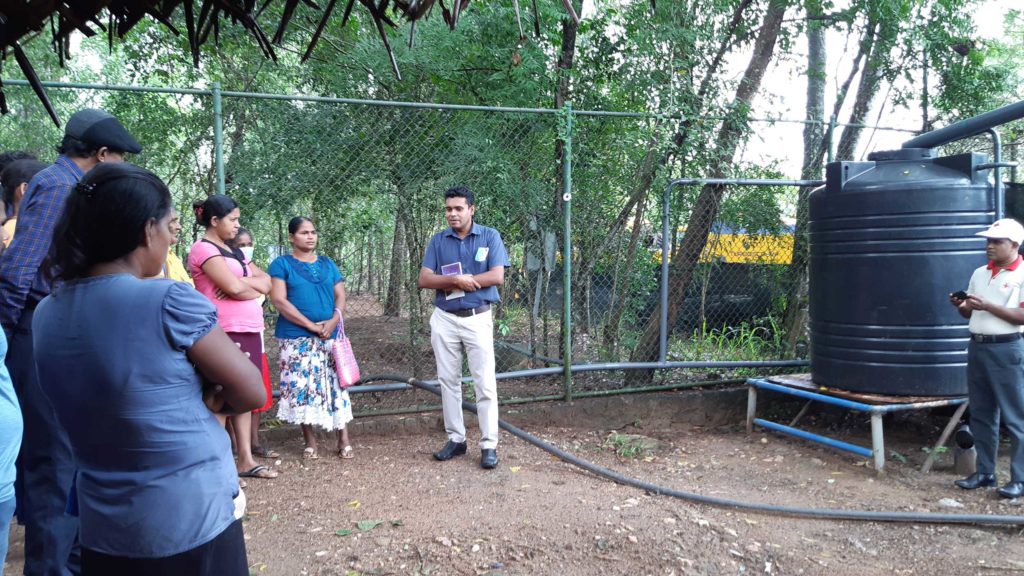Ground water recharging for efficient, effective and sustainable use of rainwater for agriculture and human consumption
Sri Lanka has been faced with increasing frequency and intensity of disasters recently due to changes in weather patterns. Disasters such as flash floods, prolonged droughts and landslides occurring due to extreme weather have deprived lives and livelihoods while affecting almost all economic sectors of the country adversely.
The dry zone of Sri Lanka receives a mean annual rainfall of less than 1,750 mm, but the distribution during the year has varied recently due to changing rainfall patterns. The natural groundwater recharge happens as precipitation falls on the land surface, seeps into the soil and moves through pore spaces down to the water table. This process has been disturbed with high-intensity rains1, limited to a few months of the year, resulting in both unexpected floods and droughts. As a result of the high intensity of the rainfall, there is less chance of groundwater recharging or absorbance of water to the groundwater table, flowing instead to the water bodies. The runoff then exceeds the capacities of these water bodies creating floods. When the precipitated water flows away from the area within a short period during the high rains and floods, there is less opportunity for it to seep into the soil to recharge the aquifers, resulting in droughts in what typically used to be short dry seasons.
This change in the climate has directly affected the traditional rain-fed and irrigated farming done by the dry zone farmers who depend on rainfall and minor irrigation reservoirs for cultivation, with an inadequate water volume being received within the required time period.
With the situation in the dry zone as it is, the Climate Resilient Integrated Water Management Project (CRIWMP) introduced groundwater recharging practices to improve groundwater retention thereby ensuring a continuous base flow of natural water drains that carry water to the minor reservoirs even during a prolonged drought. Promoting the same techniques among farming communities ensure soil water availability for crop survival while reducing crop loss due to the scarcity of water during droughts.
Groundwater recharging is carried out by directing rainwater into small recharging pits, referred to as groundwater recharging units. These units allow the rainwater to replenish groundwater by recharging the underground aquifers. A total of 52 groundwater recharging units were established in 2020, with household-level Rain Water Harvesting units already installed2 in selected villages. These 52 families in Galgamuwa and Ehetuwewa now enjoy the benefits of groundwater recharging in their lands.
Nishshanka, a community leader in Weherabandiyawa village in Buduruwakanda Grama Niladhari Division3, Galgamuwa, recalled the challenges the community faced and how they were overcome, “we faced many difficulties in collecting not only drinking water but also utility water, due to hardness in the groundwater and low groundwater table. We get rain during a few months of the year and our lands are dry for the rest of the year. Once we received rainwater harvesting tanks in 2019 from the project, we realized how much good quality water we can collect from the rain for free, how much water we have wasted all these years. We started groundwater recharging in 2020, which was a novel practice for our community. Now I am happy, our lands have become greenish than before, as a result of using rainwater to recharge the soil of our lands.”

Nishshanka with his Rain Water Harvesting Unit
Swarnakanthi, a housewife in the same village is happy. “I always wanted to have a home garden” she explains “it is now a reality since we started recharging our soils.”

Swarnakanthi at her groundwater recharging pit in her home garden
“We made a visit to Wariyapola. There were demonstrations of different rainwater harvesting and groundwater recharging methods and we learnt a lot during that visit”, she further added.
A group of members from the same community who had already received rainwater harvesting tanks visited the Ground Water Section (North-Western Provincial Office), National Water Supply and Drainage Board (NWSDB), Wariyapola, prior to establishing groundwater recharging units in their lands. Existing knowledge gaps such as lack of awareness on climate change and its impacts and lack of understanding of groundwater recharging as a climate change adaptation measure were addressed through awareness programs, training and exposure visits. These activities helped immensely in educating the community on the subject to empower and engage them in the process of implementation.

Community of Buduruwakanda during the field visit to NWSDB demonstration site
This Ground Water Recharging program was carried out in the Kurunegala District considering the following factors in the area.
§ Located in the dry zone of Sri Lanka and vulnerable to climate change
§ Highest intensity of minor irrigation reservoirs compared to other districts of the country
§ High presence of vulnerable smallholder farmers
§ Limited access to safe drinking water
§ High incidence of chronic kidney disease of unknown aetiology (CKDu)
This initiation contributed to the National Adaptation Plan (NAP) for climate change impacts in Sri Lanka, developed for 2016-2025 (in line with Paris Agreement commitment and the implementation of Nationally Determined Contributions (NDCs)), under priority actions in the Water Resources sector. Moreover, it contributed to achieving Sustainable Development Goals (SDGs); 1 – No Poverty, 2 – Zero Hunger, 6 – Clean Water & Sanitation and 13 – Climate Action.
Groundwater recharging is instrumental in safeguarding water catchment areas with their ecosystems delivering adaptation services, such as the buffering capacity of ecosystems against climate changes. Improving the water retention of the entire system is key to the well-being of all living organisms in the ecosystem.
